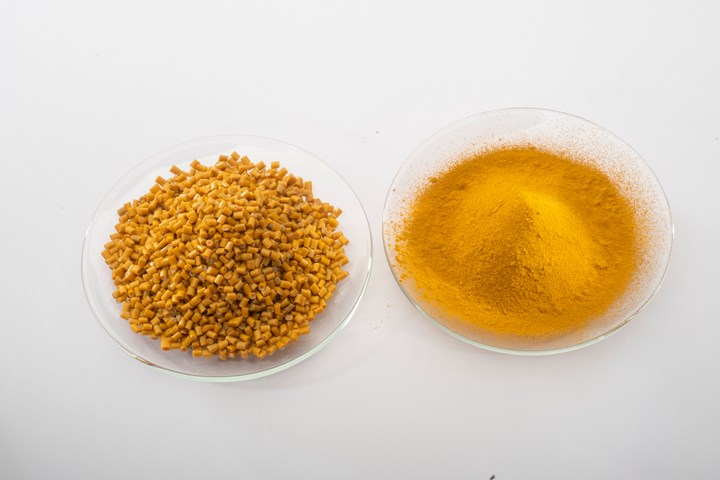Heat-Resistant Inorganic Yellow Pigments for High-Performance Polymers
Lanxess’ Colortherm Yellow pigments based on iron oxide and zinc oxide are designed for cost-effective coloration
Two new yellow inorganic pigments for high-performance polymers has been added to the Colortherm Yellow pigment range from Lanxess, Pittsburgh, Penn. Colortherm Yellow 5 and Yellow 26 are based on iron oxide and zinc oxide respectively and are specially designed for cost-effective coloration in a temperature range of between 220 C/428 F and 260 C/500 F.
With equally high color strength at the same color space, they reportedly offer plastics manufacturers and processors an excellent compromise between the best-in-class Colortherm Yellow 20 and Colortherm Yellow 30 products, which are heat stable up to 300 C/572 F. Thermal stability as a quality factor ‘plastics’ can now be used in applications that would have been considered impossible just a few years ago. As the use of technical plastics in high-tech applications becomes more widespread, the requirement profile for the pigments used for coloring is also growing. In particular, the heat stability of the colorants is becoming a decisive quality factor. In the case of organic pigments, high processing temperatures often lead to accelerated decomposition; but inorganic alternatives subject to color variations at temperatures above 180 C/356 F.

For reliable yellow coloring of high-temperature polymers, Lanxess now offers the modular Colortherm Yellow product range. It comprises the iron oxides Colortherm Yellow 5 and Colortherm Yellow 20 as well as Colortherm Yellow 26, Colortherm Yellow 30 and Colortherm Yellow 3950 zinc ferrites. The range covers not only the color spectrum of light, saturated yellow shades but also orange tones. As such, plastic formulations can be easily realized at processing temperatures of up to 300 C/572 F, according to Lanxess.
Due to their special manufacturing process, the color strength of the zinc ferrites Colortherm Yellow 26 and Colortherm Yellow 30 is up to 20% higher than comparable products. This means a corresponding lower level of pigment addition is required to color the plastic.
Said Stefano Bartolucci, global market segment manager for plastics at the inorganic pigments business unit, “The special feature of our Colortherm Yellow product range is the high flexibility in pigment selection. Depending on the type of plastic, the pigments used can mean that varying levels of thermal stability are required – or, to put it more accurately, are sufficient. In the case of coloring PE, for example, it is sufficient for the pigments used merely not to exhibit any color changes at processing temperatures of around 240 C/464 F. However, for applications using nylon, PP, and PPS, thermal stability of around 300 C/572 F is essential. By expanding our Colortherm Yellow range of special pigments, we have given processors the option to choose the right pigments for them, tailored to suit the type of plastic to be colored and the requisite thermal stability.”
Related Content
-
Graphene-Enhanced Stretch Film Billed as 'World First'
Thinner, stronger films to be commercialized by Brazil’s Packseven in August.
-
Compatibilizers Aid Recycling & Upcycling of Mixed Resins
Compatibilizers are proving their worth in boosting critical properties such as impact/stiffness balance of PCR and PIR blends of polyolefins and other plastics.
-
PFAS-Free Processing Aid for Blown Film Extrusion
Ampacet’s new processing aid said to perform as well as fluoro-based PPAs in blown film.















